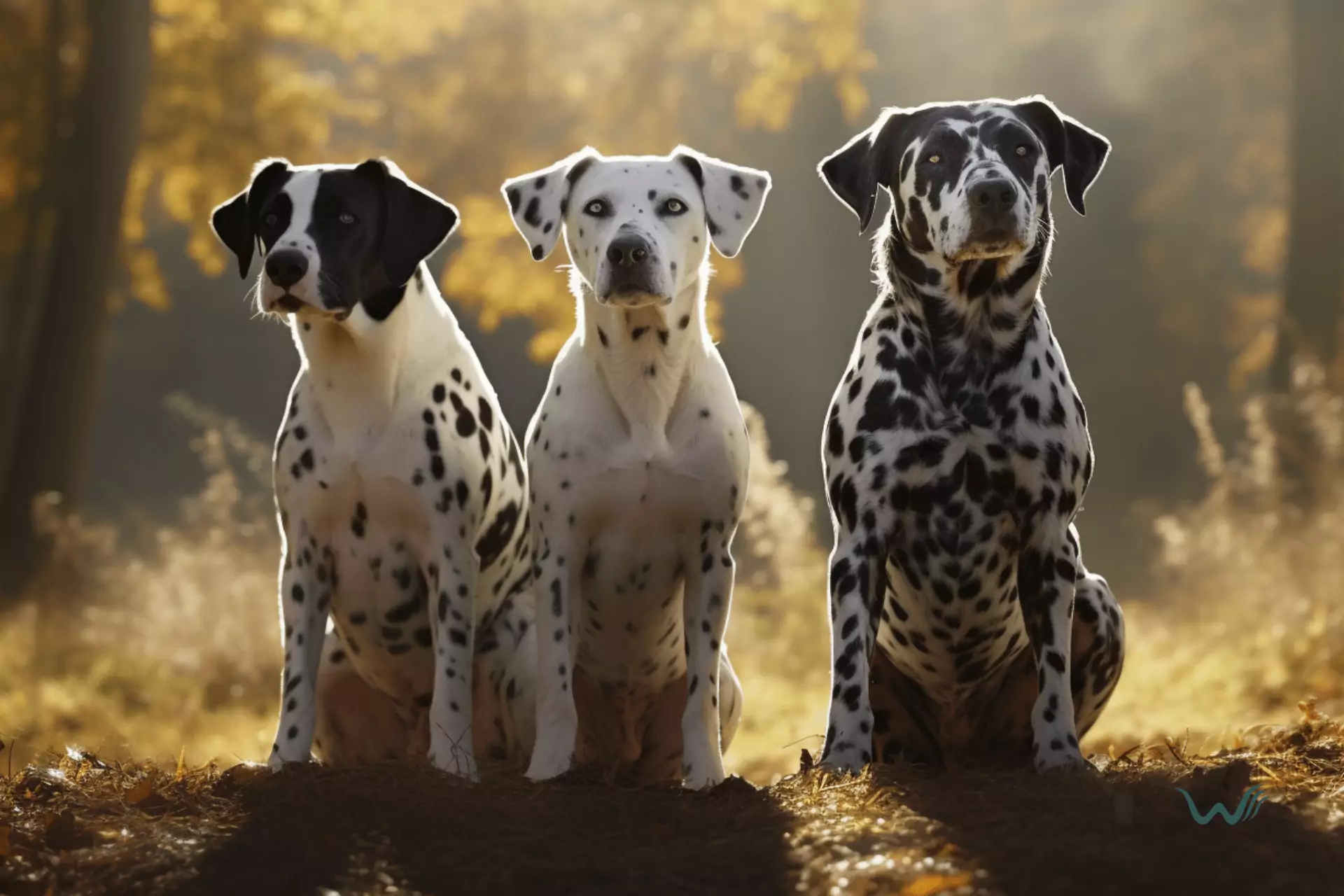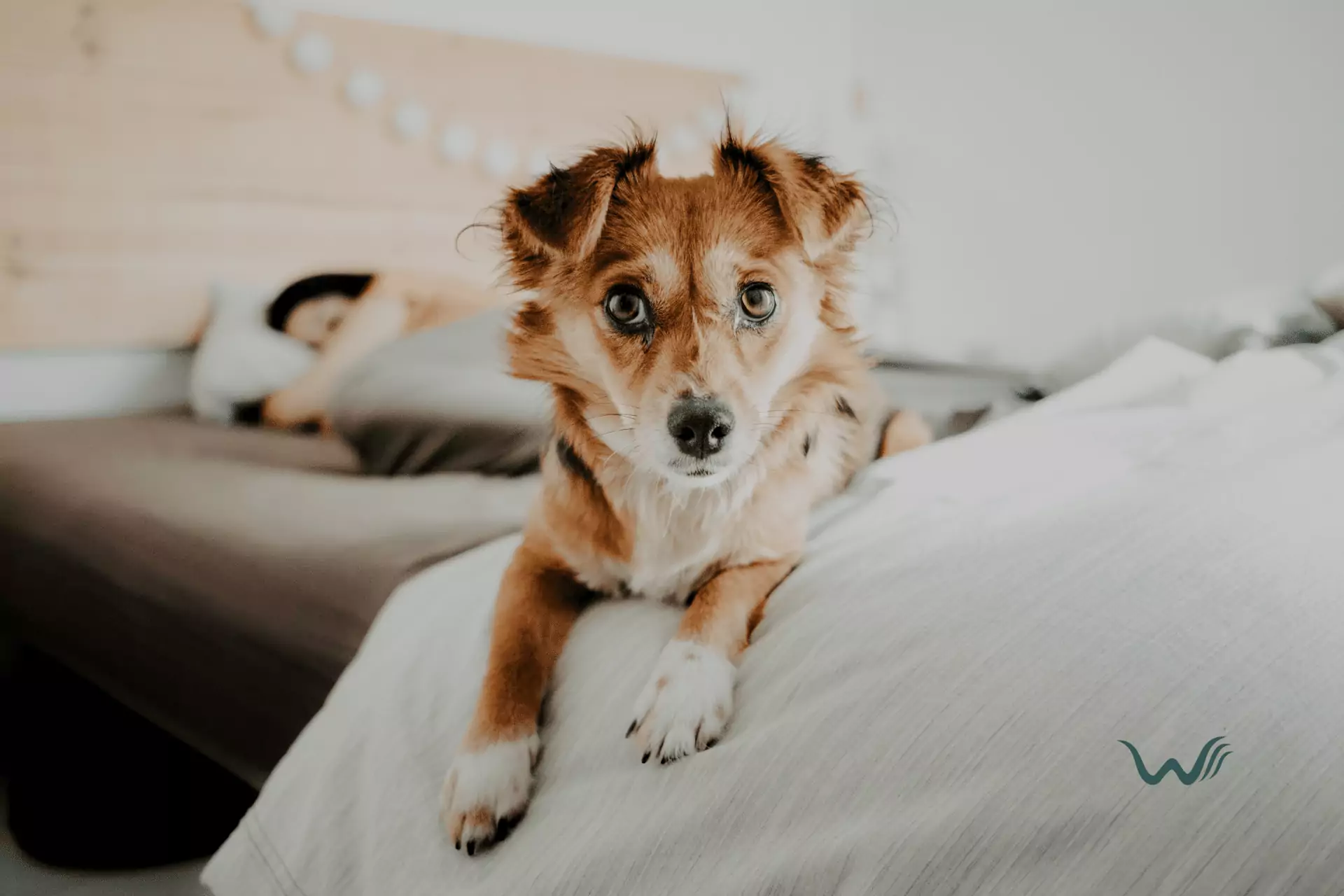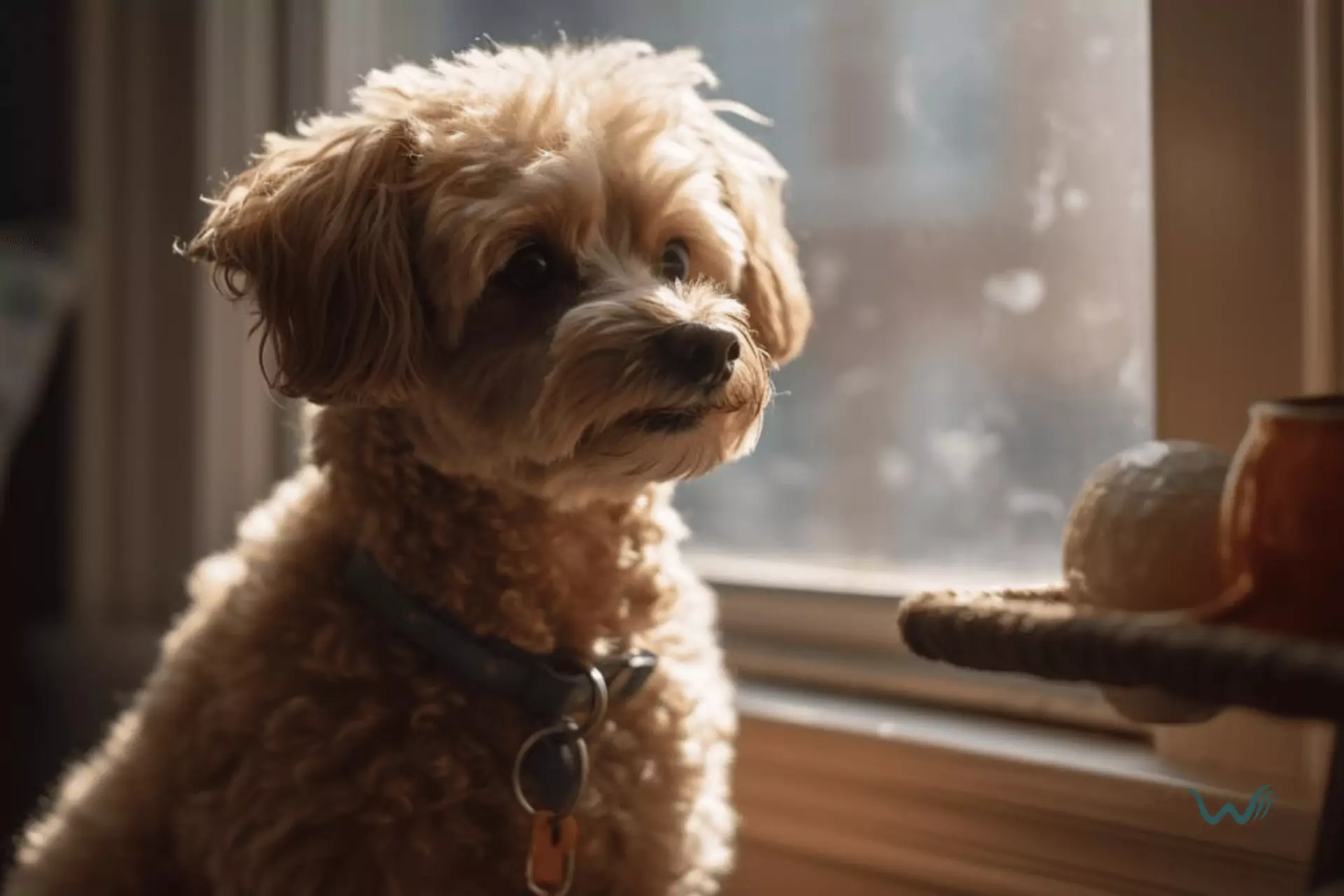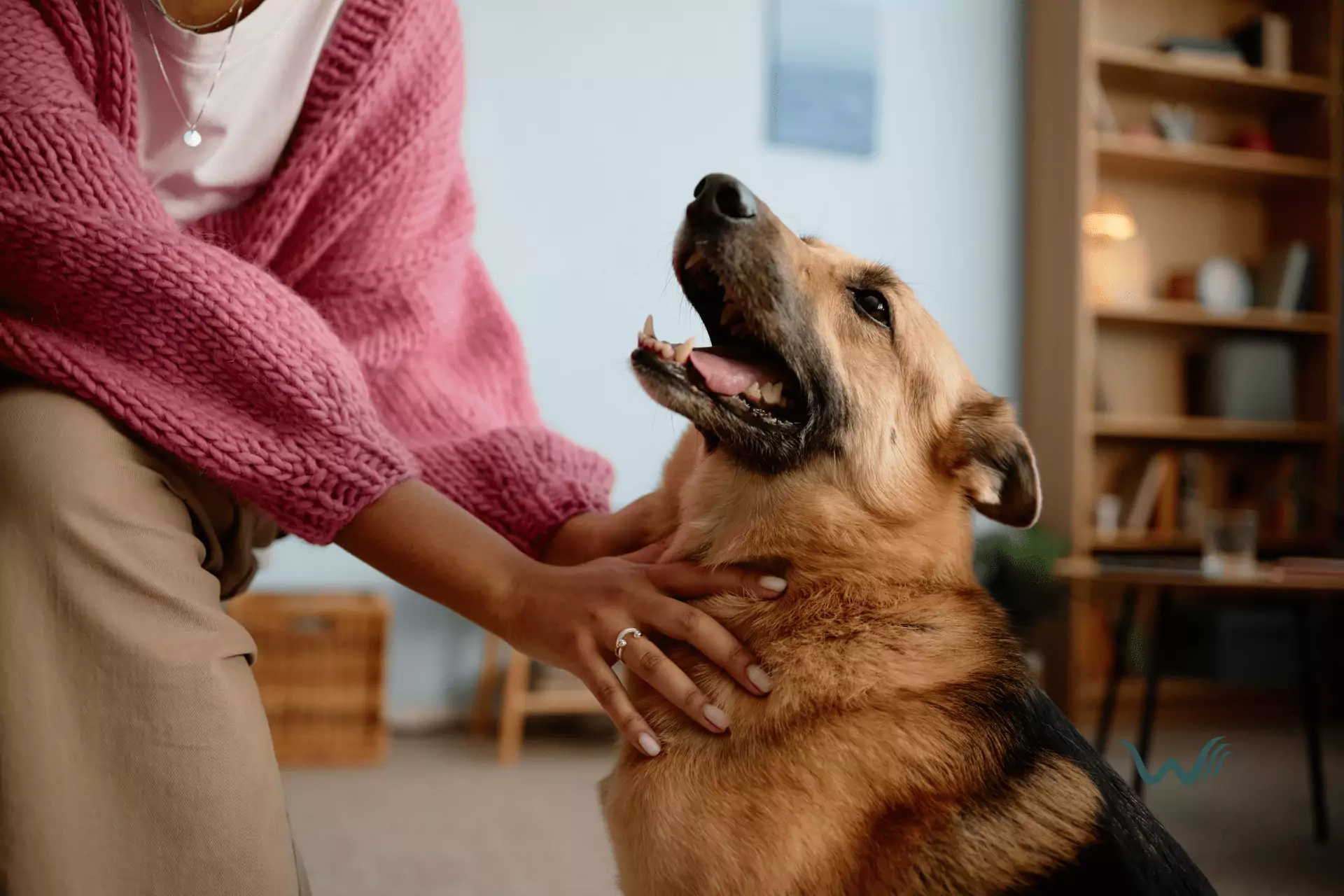

Why Do These Rare Dog Breeds Have Unique Coat Patterns?
by Haley Mills
Last updated: April 20, 2024
Verified and Approved by:
Angela Morris,
MSW, LCSW
Fact Checked

Do you ever find yourself staring in awe at the unique coat patterns of rare dog breeds? Those captivating swirls, spots, and stripes seem to be a work of art, don’t they?
Well, my friend, let me unveil the secrets behind these extraordinary coat patterns and why they exist. Brace yourself for a journey into the world of genetics, history, and the sheer brilliance of selective breeding.
When it comes to the genetics behind these remarkable coat patterns, it’s like a symphony of DNA playing a beautiful melody. Just like humans, dogs inherit their traits from their parents, and coat patterns are no exception. The combination of genes passed down from generations can result in a kaleidoscope of patterns that make these rare dog breeds stand out from the crowd. It’s almost like a cosmic game of chance, where the right combination of genes aligns to create these stunning works of fur art. So, the next time you see a dog with an extraordinary coat pattern, remember that it’s not just about luck – it’s about the intricate dance of genes that make them so uniquely beautiful.
Now, let’s take a step back in time and explore the historical significance of rare dog breeds and their coat patterns. These patterns were not just a random occurrence; they held a purpose. In the past, when dog breeds were primarily used for working or hunting, their coat patterns served as a form of identification. Imagine being in the midst of a chaotic hunt, and amidst the chaos, the unique coat pattern of a dog stands out like a beacon of recognition. It was a way for their owners to distinguish them from other dogs and ensure their loyalty and protection. So, these coat patterns not only added a touch of elegance but also played a vital role in the lives of these rare dog breeds.
Key Takeaways
- Rare dog breeds with unique coat patterns symbolize the rich history and traditions of their regions.
- Each coat pattern represents the heritage and identity of the people who bred them.
- These breeds are like wearing a flag on their back, proudly displaying their roots.
- The cultural and aesthetic value of these breeds lies in carrying a piece of history and tradition, making them great subjects for Instagram pictures.
The Genetics Behind Unique Coat Patterns
You won’t believe how the genetics behind these rare dog breeds’ unique coat patterns make them even more extraordinary!
It’s like they have their own little fashion show going on, strutting their stuff with their one-of-a-kind fur designs. And the best part? It’s all thanks to the magic of genetics.
You see, these rare dog breeds have a special set of genes that determine their coat patterns. It’s like they hit the genetic jackpot! Some of them have genes that create spots or patches on their fur, while others have genes that give them a marbled or brindle pattern. It’s like a game of genetic roulette, and these dogs have won big time.
But here’s where things get really interesting. These genes don’t just determine the coat patterns, they also influence the colors of the fur. So you might have a dog with a beautiful spotted coat that’s also a stunning shade of blue. It’s like they’re wearing a designer outfit that no one else can pull off.
Historical Significance of Rare Dog Breeds
Throughout history, the rare dog breeds have possessed such extraordinary and captivating coat patterns that they have become the envy of all other breeds. These unique coat patterns have not only made these breeds visually appealing, but they also hold significant historical significance. Take for example the Dalmatian breed, known for its distinct black spots on a white coat. Legend has it that these spots were actually the result of the Dalmatian’s bravery and loyalty to firefighters. It is said that these dogs would run alongside the horse-drawn fire engines, and their spots were believed to be the result of the soot and ash that would fly in the air during these daring missions. Whether this legend is true or not, it adds an element of intrigue and adventure to the Dalmatian’s coat pattern.
In addition to the Dalmatian, there are other rare breeds that have coat patterns with fascinating historical significance. The Chinese Crested breed, for example, is known for its hairless body and tufts of fur on its head, feet, and tail. This unique coat pattern is said to be the result of ancient Chinese emperors who believed that these dogs had the power to ward off evil spirits. The tufts of fur on the head, feet, and tail were believed to be symbolic of the dog’s ability to channel spiritual energy and protect its owners. While it may seem far-fetched to some, the historical significance of these coat patterns adds an element of mystique and charm to these rare dog breeds.
Coat Patterns as a Form of Identification
Imagine spotting a rare dog breed in a crowd and quickly identifying it by its distinct coat pattern. It’s like having a superpower, but instead of flying or shooting lasers from your eyes, you can tell the difference between a Dalmatian and a Great Dane just by looking at their spots.
These unique coat patterns serve as a form of identification for these rare dog breeds, allowing them to stand out in a world filled with ordinary-looking canines.
But why do these rare dog breeds have such unique coat patterns? Well, it’s all about survival of the fittest, my friend. You see, in the wild, animals use camouflage to blend in with their surroundings and avoid being eaten by predators. But these rare dog breeds have taken a different approach. They’ve decided to stand out and be proud of their distinct coat patterns. It’s like they’re saying, “Hey, predators! Look at me! I’m so rare and unique that you wouldn’t want to eat me even if you could!” And guess what? It works!
These coat patterns act as a form of warning to potential predators, signaling that these dogs are not to be messed with. So the next time you see a rare dog breed with a unique coat pattern, remember that they’re not just stylish fashion statements, they’re also a clever survival strategy.
Selective Breeding for Unique Coat Patterns
As a dog lover, it’s fascinating how breeders have carefully chosen and mixed different genetic traits to create these extraordinary dog breeds with coat patterns that are like works of art.
It’s like they’re playing a game of genetic Tetris, trying to fit all the right pieces together to create the perfect pattern. And let me tell you, they’ve definitely succeeded!
These rare dog breeds have coat patterns that are so unique and eye-catching, they could easily be mistaken for abstract paintings hanging in a fancy gallery.
But why do breeders go through all this trouble to create these unique coat patterns? Well, besides the fact that they’re just downright cool to look at, there are a few reasons.
For one, these patterns can help differentiate one breed from another. Imagine going to a dog show and seeing a sea of similar-looking dogs. It would be hard to pick out your favorite breed, right? But with these unique coat patterns, it’s like each breed has its own fashion statement, making it easier for us dog lovers to spot our favorites in the crowd.
Another reason breeders select for these coat patterns is because, let’s face it, we humans love things that are aesthetically pleasing. We’re drawn to things that are visually interesting and different, and these unique coat patterns definitely fit the bill.
It’s like having a dog that’s not only your best friend, but also a walking work of art. Plus, it’s always fun to show off your dog and watch people’s jaws drop as they marvel at their beautiful coat.
Do Unique Coat Patterns Affect a Dog’s Loyalty and Protective Nature?
Unique coat patterns do not impact the loyalty and protective nature of loyal protective dog breeds. These traits are inherent to the breed and not affected by external factors like coat patterns. It is more about genetics and upbringing than physical appearance when it comes to a dog’s loyalty and protective instinct.
Cultural and Aesthetic Appreciation of Rare Dog Breeds
Take a moment to appreciate the cultural and aesthetic value of these lesser-known dog breeds and their distinct coat patterns. These rare dog breeds are like the fashionistas of the dog world, strutting their stuff with their unique and eye-catching coat patterns. It’s like they have their own personal stylist, carefully selecting each spot and stripe to create a masterpiece of fur.
And let’s be honest, who doesn’t love a little bit of fashion in their lives, even if it’s in the form of a furry friend?
But it’s not just about looks, oh no! These rare dog breeds with their unique coat patterns also have a cultural significance. They are a symbol of the rich history and traditions of the regions they come from. Each pattern tells a story, representing the heritage and identity of the people who bred them. It’s like wearing a flag on your back, proudly displaying your roots for all to see. Plus, let’s be honest, they make for some pretty great Instagram pictures too!
Frequently Asked Questions
How much do rare dog breeds with unique coat patterns typically cost?
Rare dog breeds with unique coat patterns can be quite expensive, as their rarity and distinctiveness make them highly sought after. Prices can vary greatly depending on factors such as breed, lineage, and demand, but be prepared to shell out a pretty penny for these fashionable furballs.
Are there any health concerns associated with unique coat patterns in rare dog breeds?
Sure, unique coat patterns in rare dog breeds can sometimes come with health concerns. Some patterns, like merle, can be associated with vision and hearing problems. It’s important to research and consult with breeders to make an informed decision.
Can rare dog breeds with unique coat patterns participate in dog shows and competitions?
Sure, rare dog breeds with unique coat patterns can absolutely participate in dog shows and competitions! Judges actually love seeing these unusual patterns because they add an extra flair and make the competition more exciting. So, go ahead and show off your funky furball!
Are there any specific grooming requirements for rare dog breeds with unique coat patterns?
Sure, let’s talk about grooming those fabulous rare dog breeds with unique coat patterns. From luxurious brushing sessions to fancy trims, these pups need some extra TLC to keep their stunning coats looking flawless.
What are some common misconceptions about rare dog breeds with unique coat patterns?
Think you know all there is to know about rare dog breeds with unique coat patterns? Think again! Common misconceptions include thinking they’re high maintenance and that their patterns are just for looks.
Certify Your Emotional Support Animal Today

Why You Can Rely on Us?
At Wellness Wag, we believe your pet deserves care rooted in both science and compassion. Each article is carefully researched, written in clear language for pet owners, and then reviewed by qualified professionals to ensure the information is evidence-based, current, and practical for real-life care. Our goal is to help you feel confident in making informed decisions about your pet’s health and well-being.
Reviewed by
Angela Morris, MSW, LCSW
Angela is a licensed clinical social worker with 20 years of experience in patient advocacy and community mental health. She has assisted numerous clients with ESA evaluations and brings a deep understanding of disability accommodations, ensuring that all information is accurate, supportive, and practical.

Written by :
Haley Mills
Last Updated :
April 20, 2024












